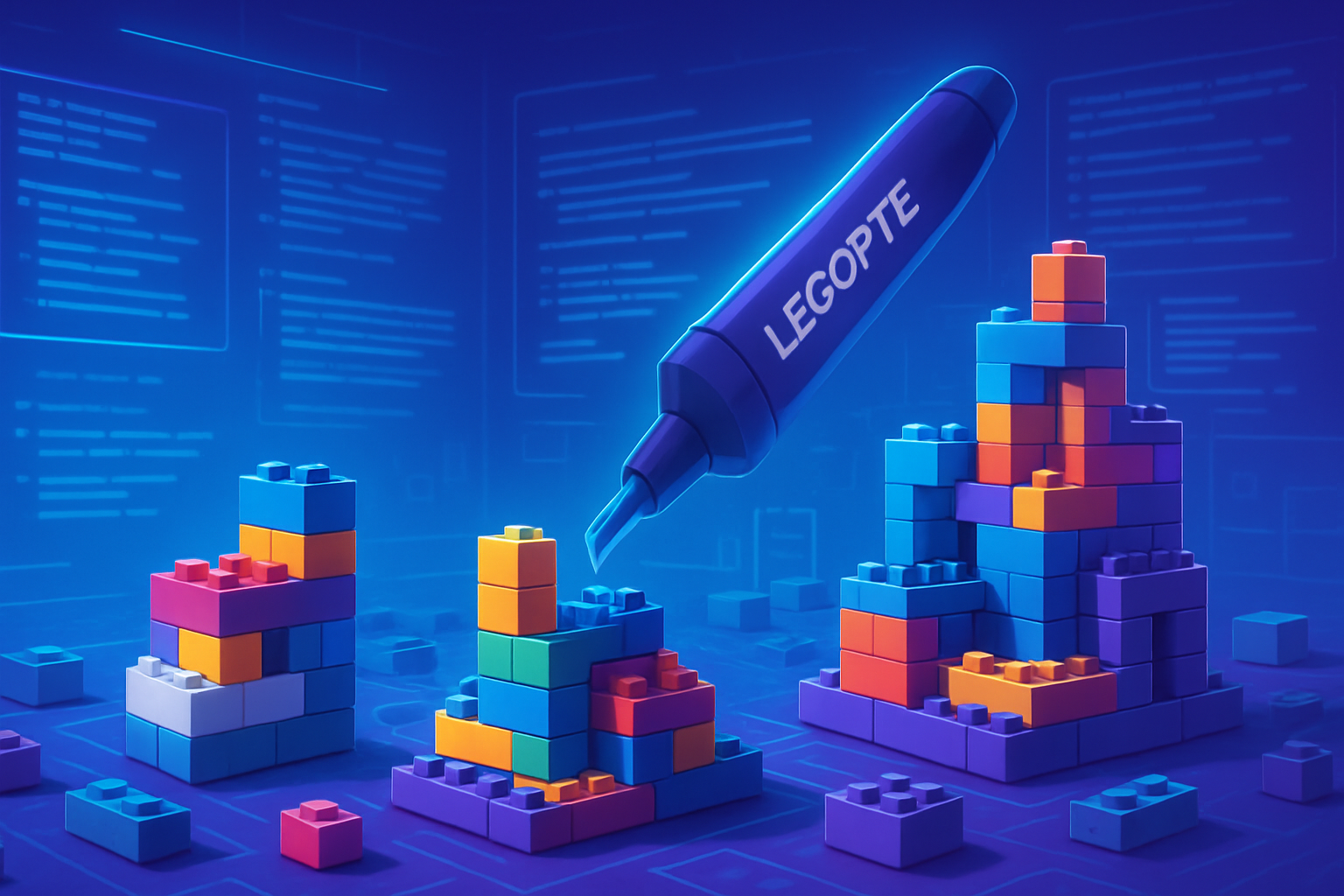Legopte revolutionizes creative architecture with LEGO bricks. This innovative application harnesses the potential of advanced artificial intelligence to design functional structures. The process is based on textual descriptions, allowing for inventive interaction with the playful world of LEGO.
Conventional challenges related to the design of stable objects are erased thanks to this technology. Engineers no longer just create but also ensure the *physical viability* of their creations. Thousands of models have been tested, thus illustrating the ingenuity of this systematic approach. Legopte reinforces the idea that technology can stimulate imagination and transform simple bricks into spectacular architectural works of art.
Introduction to Legopte
Legopte proves to be an innovative application designed by a team of engineers from Carnegie Mellon University. This tool leverages an advanced language model to generate stable structures from LEGO bricks in response to textual descriptions. The results have been published on the arXiv platform, illustrating the potential of AI in the field of assisted design.
Technologies and Development
The creation of this system is based on the LLaMA-3.2-1B-Instruct language model developed by META. Researchers transformed word predictions into brick predictions. This transition allows the AI to propose robust constructions by considering physical forces and gravity. A separate mathematical module has been integrated to ensure the stability of the proposed creations.
Model Training
To refine the AI, researchers compiled a dataset comprising 47,000 stable LEGO structures and their characteristics. Each structure was accompanied by captions created by another artificial intelligence system. This process allowed training of the AI to generate reliable designs.
Design Process
The operation of Legopte is based on a recursive approach. Bricks are added one by one and then tested to determine whether their addition compromises the stability of the model. In case of instability, the element is removed, and a new solution is explored. This methodology has significantly improved the success rate of designs, reaching up to 98.8% of balanced structures.
Tests and Results
Programmable robots were used to build models generated by Legopte, allowing practical validation of the generated concepts. Researchers also experimented with building structures manually, thereby confirming the reliability of their designs. This method revealed that the system surpasses other AIs dedicated to creating 3D objects in terms of stability.
Future Applications
Legopte paves the way for numerous potentially revolutionary applications in the fields of education, engineering, and creative design. The innovation brought by this tool could inspire new learning paths for young builders and LEGO enthusiasts while encouraging critical thinking and ingenuity.
References and Additional Resources
For further insights into innovations in artificial intelligence, other articles can be consulted, such as those on advancements by Google AI (here) or the progress made by NVIDIA (here). Articles on OpenAI’s innovations are also available for those interested in the evolution of artificial intelligence systems (here).
Frequently Asked Questions about LegoGPT
What is LegoGPT and what does it consist of?
LegoGPT is an artificial intelligence application developed by a team of engineers from Carnegie Mellon University, designed to create stable structures using LEGO bricks based on textual descriptions.
How does LegoGPT work to generate design structures?
LegoGPT uses a language model based on AI that predicts the next bricks to be added while considering physical stability and structural forces, thus allowing for the creation of robust designs.
What types of structures can be created with LegoGPT?
With LegoGPT, it is possible to generate a wide variety of structures, ranging from simple constructions to more complex and elaborate designs, all tested for their stability.
What is the success rate for building stable structures with LegoGPT?
Thanks to a testing and removal mechanism, LegoGPT has achieved a design stability rate of 98.8%, significantly higher than other similar AI systems.
How does LegoGPT assess the stability of its designs before actual construction?
LegoGPT utilizes an iterative process where each added brick is tested for stability. If a brick compromises the structure, it is removed, and another option is explored.
Does LegoGPT rely solely on pre-established models for its designs?
No, LegoGPT generates original designs using a database of 47,000 proven structures while integrating capabilities to add color and texture.
Does using LegoGPT require specific technical knowledge?
No, LegoGPT is designed to be accessible and can be used by anyone, even without previous experience in design or construction.
What are the advantages of LegoGPT compared to other 3D design tools?
LegoGPT stands out for its ability to ensure the physical stability of its designs, unlike other tools that may produce non-viable objects due to issues with gravity or disconnection.
Can the structures generated by LegoGPT be built with real LEGO bricks?
Yes, LegoGPT develops plans that can be executed with real LEGO bricks, and tests demonstrate that these designs are feasible in the real world.
Where can I learn more about the features and performance of LegoGPT?
For detailed information on the capabilities and research behind LegoGPT, you can consult published studies and academic resources available online.






